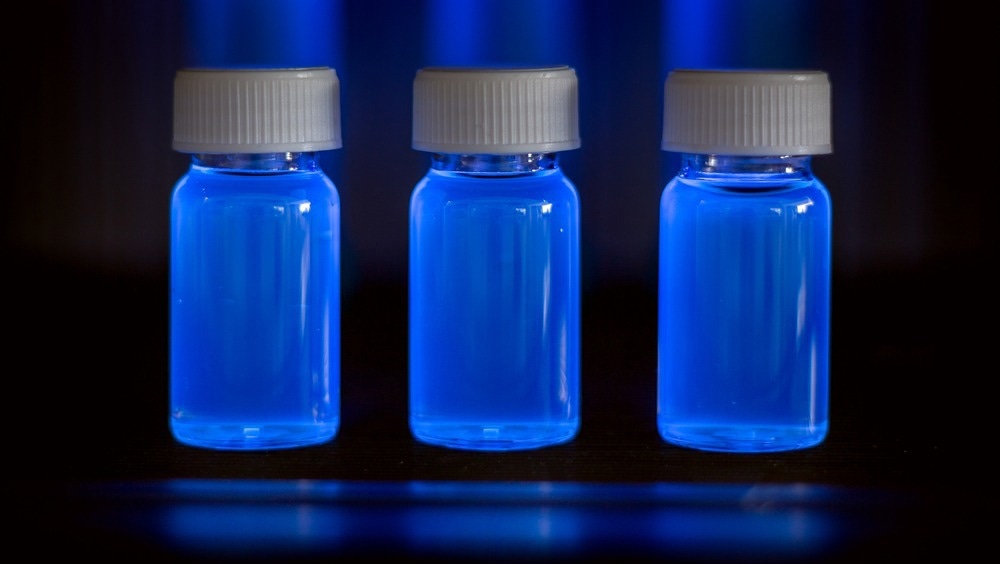Graphene quantum dots-based nanohybrids (GQD NHs) are known to be a viable option for optoelectronic equipment because of their prominent carrier transfer and tunable light absorption characteristics.

Study: Unravelling the Surface-State Assisted Ultrafast Charge Transfer Dynamics of Graphene Quantum Dot-Based Nanohybrids via Transient Absorption Spectroscopy. Image Credit: Tayfun Ruzgar/Shutterstock.com
In a paper published in The Journal of Physical Chemistry C, researchers used an instantaneous transient absorption spectroscopy approach to study photoinduced charge (electron/hole) transfer (PCT) in GQD-(p-methoxy aniline (POMe)/p-nitroaniline (PNO)) nanohybrids.
The Age of Graphene Quantum Dots
The growing demand for renewable energy is driving extensive research into numerous biocompatible eco-friendly nanomaterials. In particular, quantum dot solar cells (QDSC) and dye-sensitized solar cells (DSSC) have already demonstrated that standard semiconductor quantum dots based on metals are a promising choice for optoelectronic applications.
Despite their high light-to-power transformation performance, their low photostability and toxicity can prove to be a significant barrier to their efficient use.
In this context, a nonmetallic semiconductor i.e., graphene quantum dots (GQDs), is a favorable option for applications in energy harvesting.
Key Aspects of Graphene Quantum Dots
Graphene quantum dots are zero-dimensional (0D), disc-shaped nanodots comprising one or few graphene layers and range in size from 4 to 15 nanometers.
They are well suited for a variety of potential applications due to their wide material characteristics, such as the quantum confinement effect, chemical stability, solubility in organic and aqueous mediums, enhanced quantum yield and more.
Finding the critical elements that affect a photoactive material's carrier dynamics is crucial for improved device development. Interfacial charge separation, carrier recombination, carrier relaxation, and other mechanistic elements of exciton dynamics preceded by photoexcitation in graphene quantum dots still remain unclear.
Recent Focus of Graphene Quantum Dot Research
A recent study on graphene quantum nanodots has also concentrated on the ultrafast exciton dynamics and related nonradiative as well radiative mechanisms that regulate various optoelectronic technologies.
Some distinctive optical characteristics of graphene quantum dots include an electron-accepting inclination, ultrafast hot-electron extraction, size-dependent PL characteristics, and hot-electron lifetimes (hundreds of picoseconds), which have already been studied.
To use GQD in carbon-based nanoelectronics, it is essential to understand their charge transfer patterns on ultrafast time scales. There is not much literature available for describing the action of charge transfer in graphene quantum dots on a femtosecond time scale.
Important Findings of the Study
Femtosecond transient absorption spectroscopy was used to examine the surface state-induced extra fast charge carrier behavior in GQD/PNO and GQD/POMe nanohybrids.
Graphene quantum dots were synthesized through hydrothermal reaction. Multiple spectroscopic techniques were used to confirm the existence of surface states in GQD, and their impacts on charge transmission interactions between aniline derivatives (PNO and POMe) and GQD were examined.
Studies on time-resolved photoluminescence and steady-state emission imply that charge transmission from photoexcited GQD to aniline derivatives may be possible. Ultrafast transient absorption spectroscopy studies showed a surface state affecting photoinduced charge (electron/hole) transmission in GQD NH systems.
The anticipated charge transfer times for GQD/POMe and GQD/PNO were 0.4 and 0.3 picoseconds, respectively. Compared to GQD/PNO, rapid degradation kinetics were found for GQD/POMe, demonstrating a more effective charge transmission interaction in the former system.
According to cyclic voltammetry study, the energetically permitted PCT pathways will involve an electron (hole) exchange from the CB (VB) of GQD to the LUMO (HOMO) level of PNO (POMe). DFT examination provides further theoretical approval to these results. In addition, TD-DFT study offers the potential electronic transitions in Graphene quantum dots, which is consistent with the study's results.
For many real-world applications, including the fabrication of solar cells, photocatalysis, photoelectrochemical sensors, and optoelectronic devices, it is essential to comprehend the charge transfer dynamics of GQD-based nanohybrids at the ultrafast scale.
Reference
Sebastian, D., Pallikkara, A., Bhatt, H., Ghosh, H. N., & Ramakrishnan, K. (2022). Unravelling the Surface-State Assisted Ultrafast Charge Transfer Dynamics of Graphene Quantum Dot-Based Nanohybrids via Transient Absorption Spectroscopy. The Journal of Physical Chemistry C. Available at: https://doi.org/10.1021/acs.jpcc.2c02170
Disclaimer: The views expressed here are those of the author expressed in their private capacity and do not necessarily represent the views of AZoM.com Limited T/A AZoNetwork the owner and operator of this website. This disclaimer forms part of the Terms and conditions of use of this website.